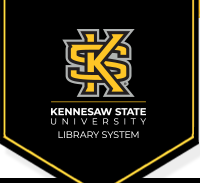Date of Submission
Spring 5-4-2017
Degree Type
Undergraduate Thesis
Degree Name
Bachelor of Architecture
Department
Architecture
Committee Chair/First Advisor
Marietta Monaghan
Secondary Advisor
Bronne Dytoc
Abstract
The interstate connector was once a really exciting and cutting edge concept for Atlanta. It celebrated a vehicular lifestyle and addressed movement in and around the city with the development of I-75, I-85, and I-285. The lack of connectivity in the Midtown area is divisive as it limits travel from one side of the Connector to the other and ruins the local atmosphere and exchange of ideas. Connecting across this sixteen lane barrier is imperative to the future success of the city of Atlanta. As society moves towards a more sustainable environment focused in pedestrian and public transit, the city needs to take another exciting architectural position on future developments. There are about ten ways to cross the connector, eight of which are focused for cars. Only two of these options are pedestrian friendly with wide sidewalks, reduced traffic noise, and create a sense of safety to cross sixteen lanes of highway. One of those two pedestrian friendly routes is a tunnel under the interstate connector, near Georgia Tech University. The one end of the tunnel was gated off with no access to the university. There is only one, reliable, pedestrian friendly way to cross the highway in a two mile stretch. This is a major problem in the Urban Fabric.
This thesis will explore sound in the solution to crossing the vast highway. There is currently a proposal for a minimal approach pedestrian bridge connecting the Home Park and Midtown neighborhoods as extensions of 15th street. This bridge is a critical location as the gateway to the city from the North. The East end of the bridge flows toward the arts district of the city and Arts Center MARTA Station for access to public transit. Being such a noise polluted area with heavy traffic through most times of the day, addressing sound is a natural progression to designing the space; however, the current proposal almost ignores the sonorous atmosphere of a highway barrier while other design moves are more thought out. This thesis proposes a more developed use of space inspired by sound and music to create not only a bridge and gateway image for the city, but a place to gather as a public amenity. The proposal provides the efficient connection across the highway to access public transit in a pleasing manner while repairing the fabric of the city. Coda is a musical concept referencing the beginning of the musical piece at the end as a satisfactory close. This concept is architecturalized by using the urban fabric to close the connection of the city at this 15th Street location, referencing the past. With this proposal, sound of the highway is not ignored as a condition but aids in the pedestrian experience. Through research of resonators and motion, sound pulls people into the project and provides the opportunity to create the destination of the highway in a park like environment, important to the city. The musically inspired landscape is appropriate for the musically inclined arts district of midtown and connects Home Park to this exciting environment. This bridge condition has the potential to expand along the entire connector, furthering the reconnection to the urban fabric.
The research of this thesis addresses connectivity, mobility, and identity through dynamic physical and auditory landscape, challenging the contemporary approach to the present typical urban design of linear mobility and affixed aesthetics.

